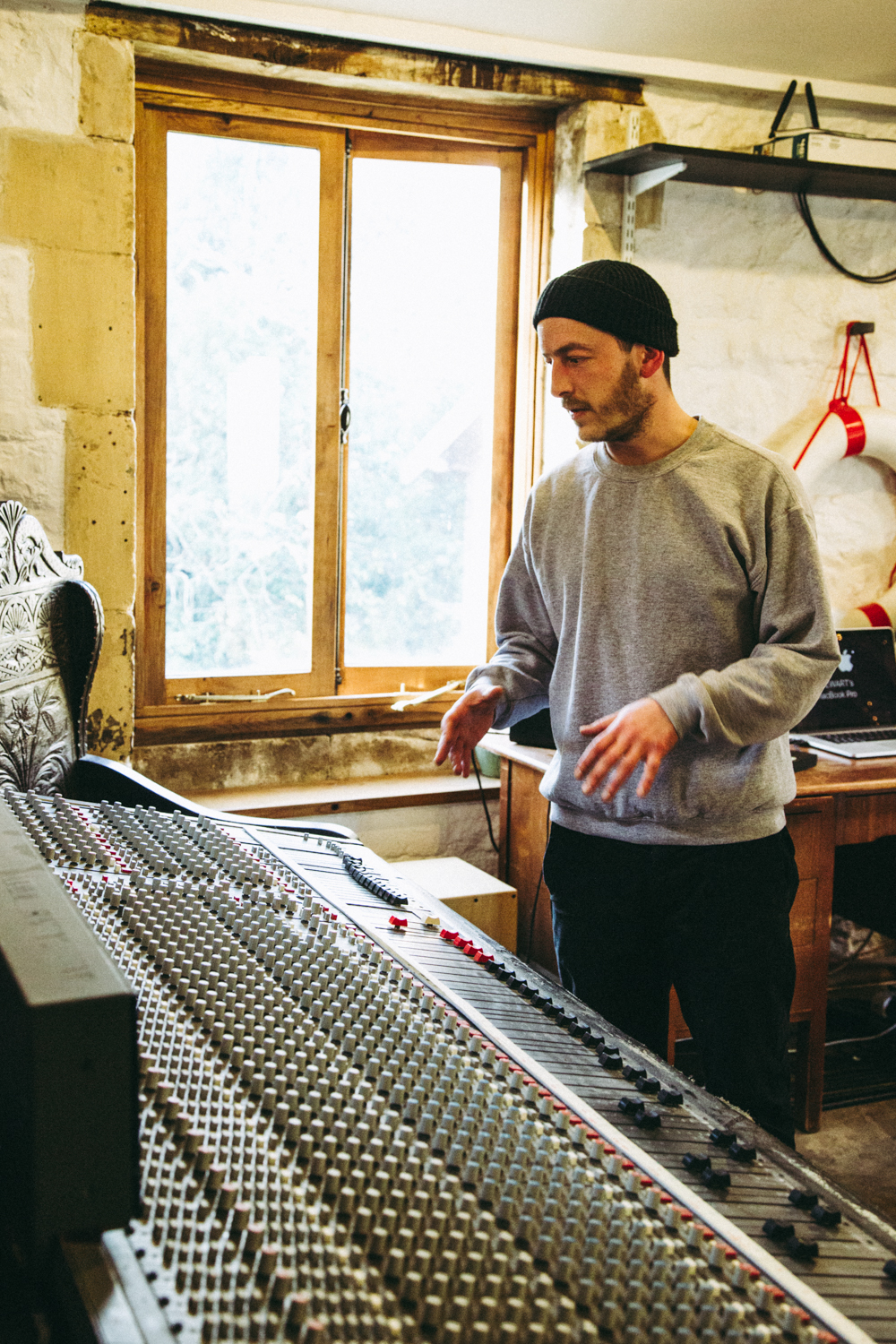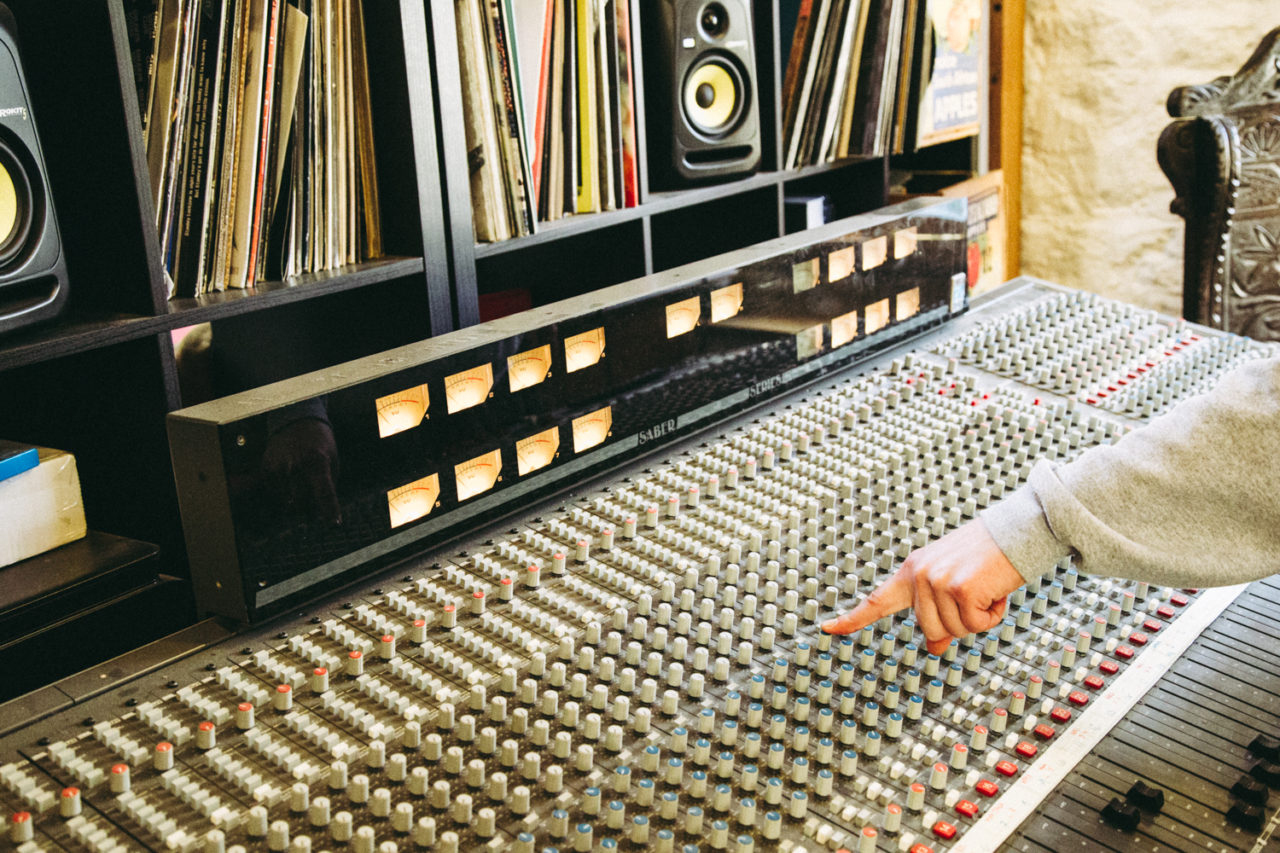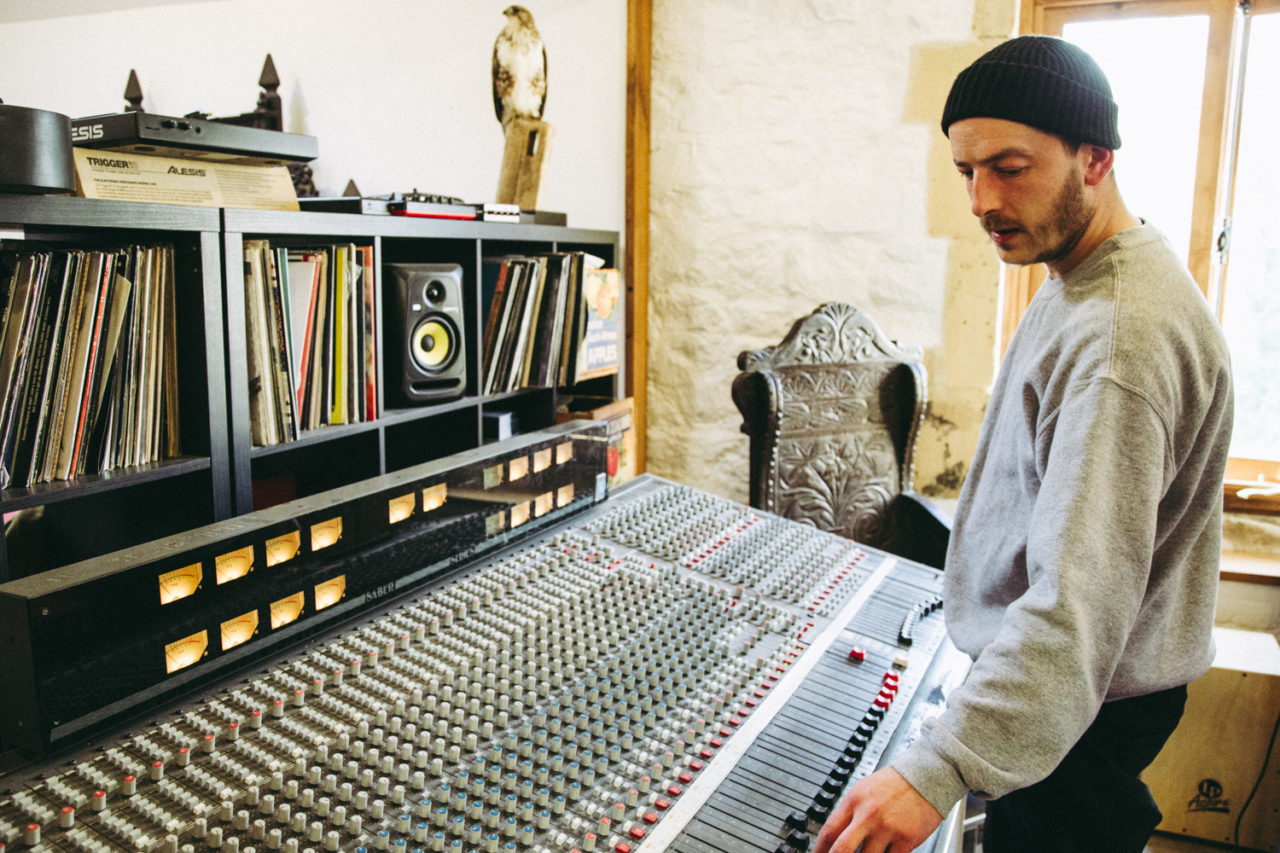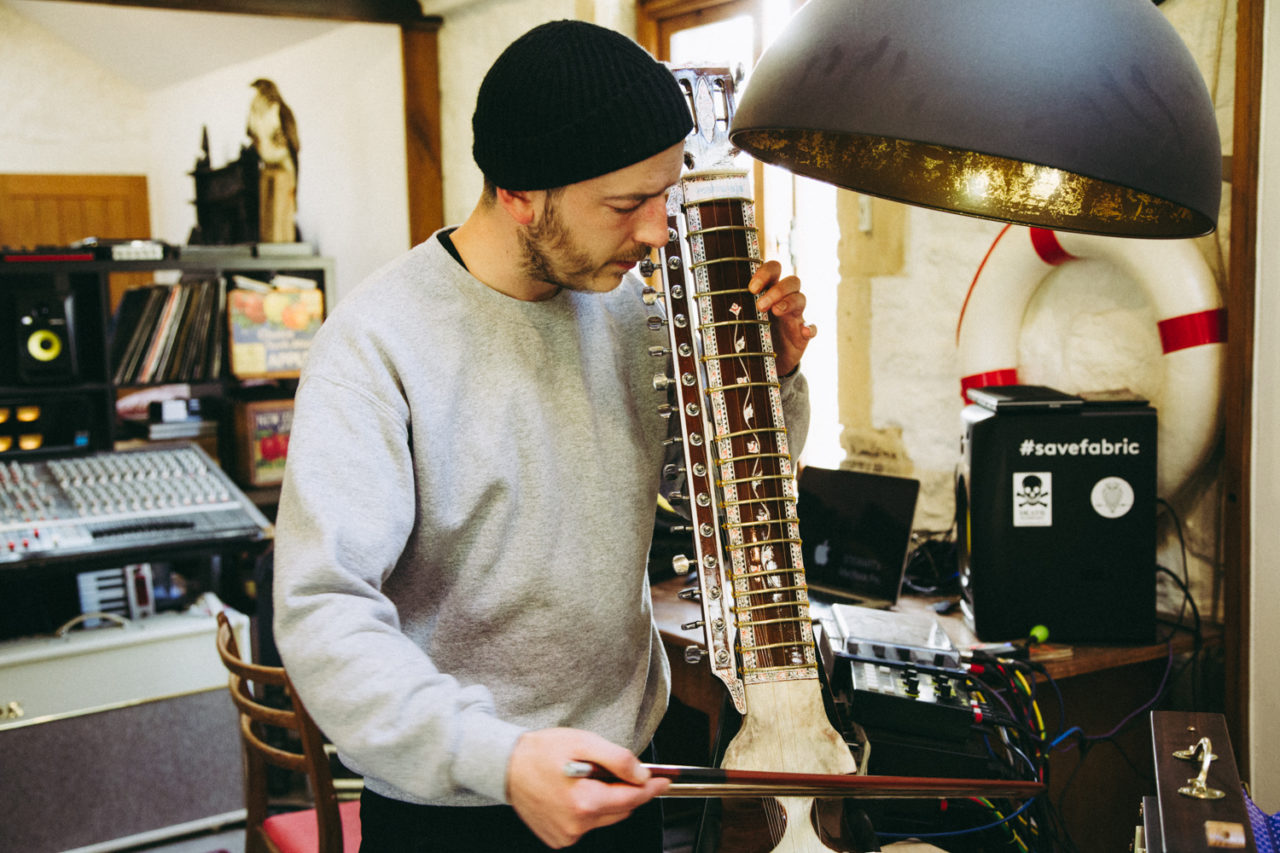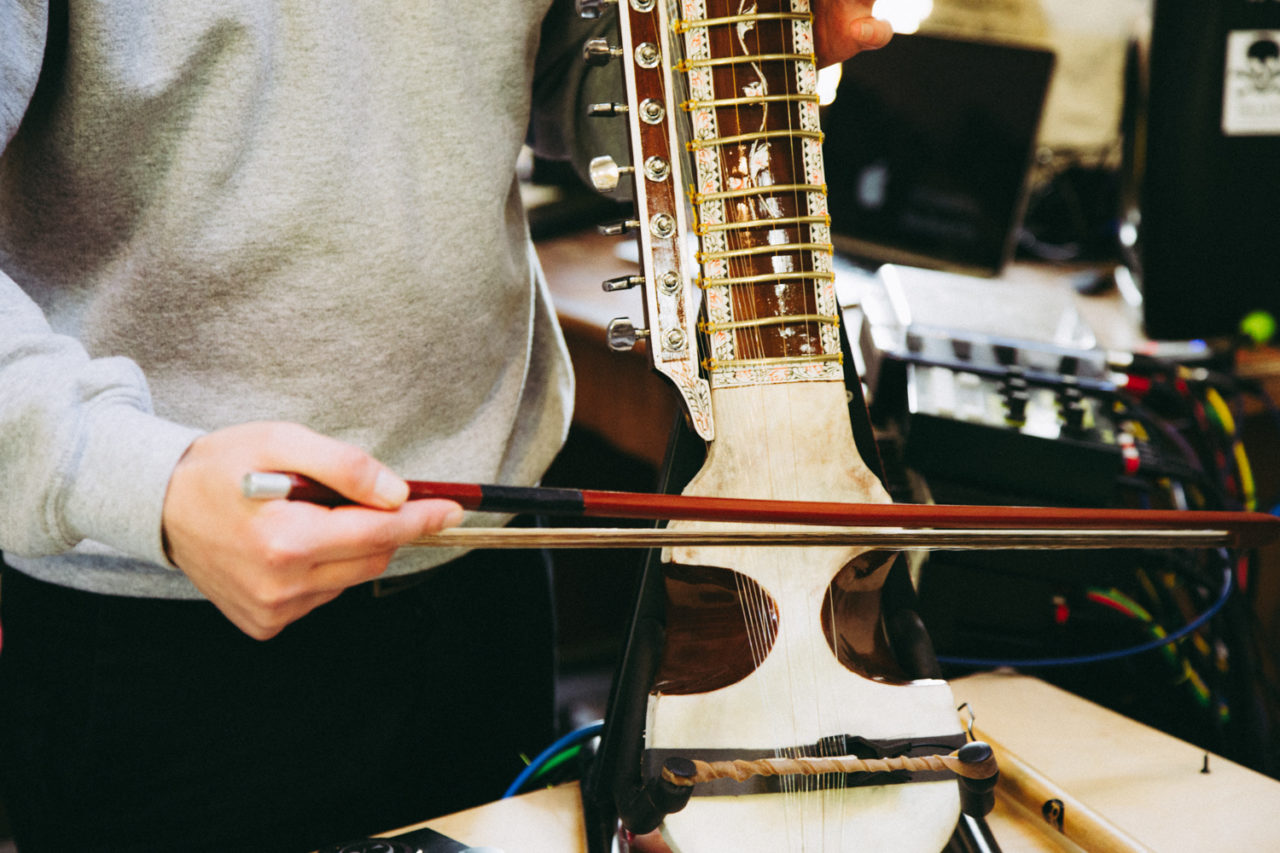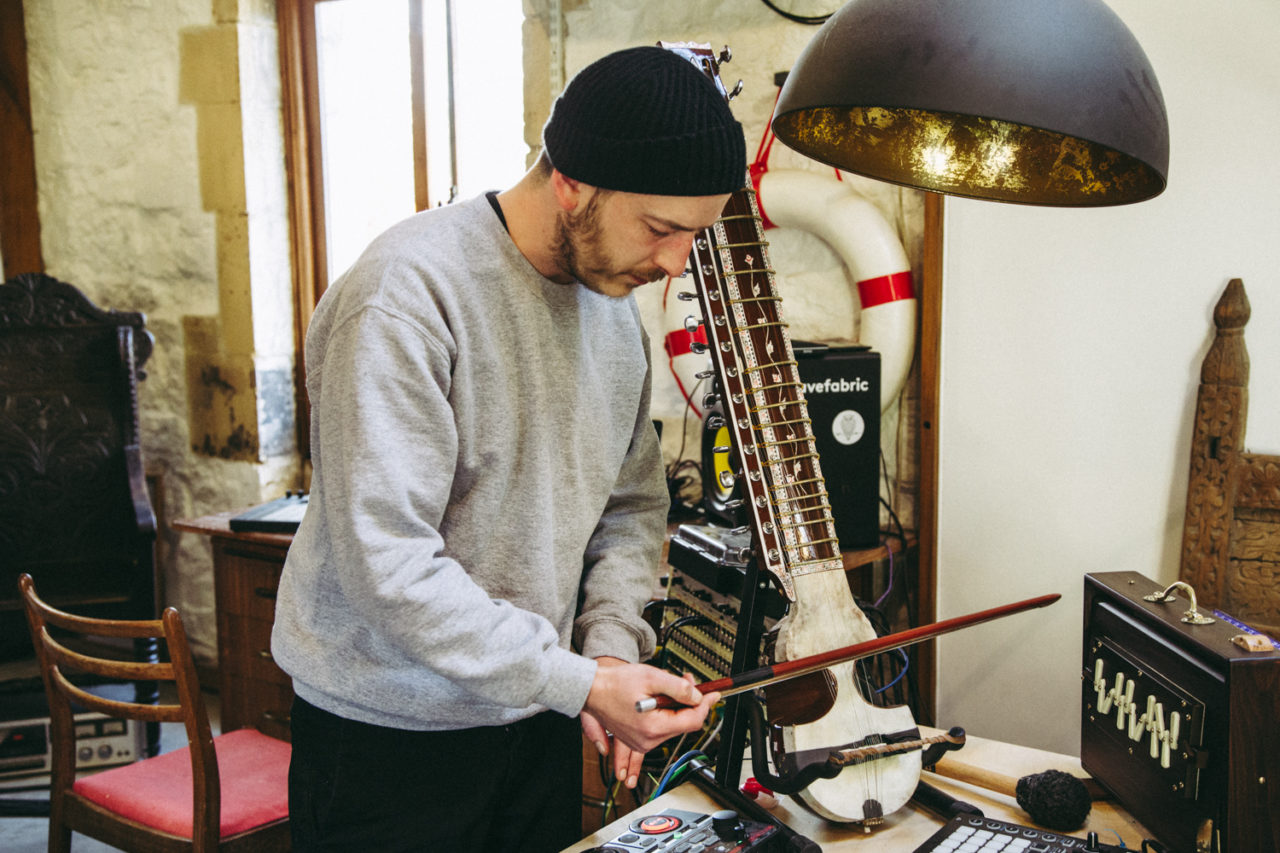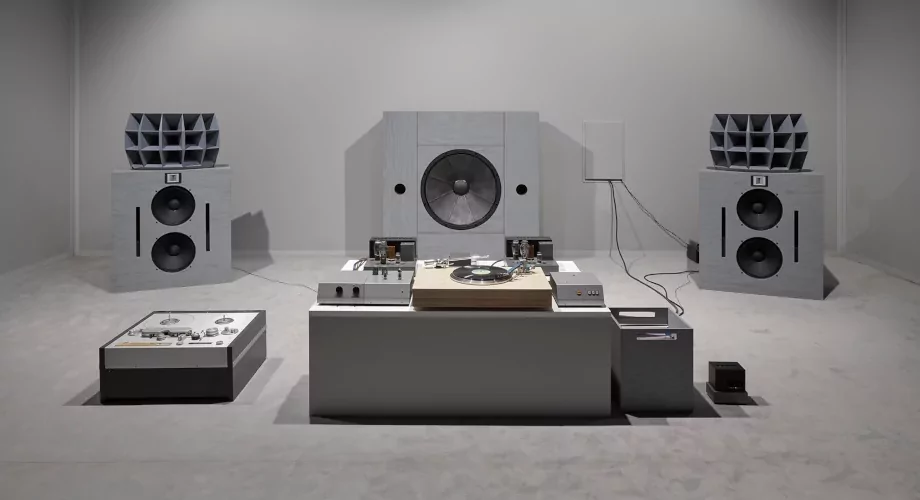Published on
February 8, 2019
Category
Features
Sounds of the Studio is a new series that takes you inside the recording spaces of our favourite artists and producers, exploring the instruments they use to make music. For the first instalment, we head to producer Throwing Snow’s castle HQ.
When you’re given a producer’s address ahead of an interview, and it contains the word ‘castle’, it is difficult to know what to expect.
What actually lies in wait when you finally descend, via various modes of transportation, upon the home studio of composer, multi-instrumentalist and producer Throwing Snow (aka Ross Tones) doesn’t disappoint. Imagine if Lewis Carrol took a long overdue trip to an analogue Narnia ensconced in rolling woodlands and you’re half-way there.
Located about an hour outside of Bristol, Tones inhabits the outer realm of an actual castle.
Its main room is bright, airy, and dominated by a vast studio set-up. A large mixing board is flanked by an old piano and synthesizers on the left, a computer set-up on the right, with instruments of all shapes, sizes and origins standing to attention in front of it.
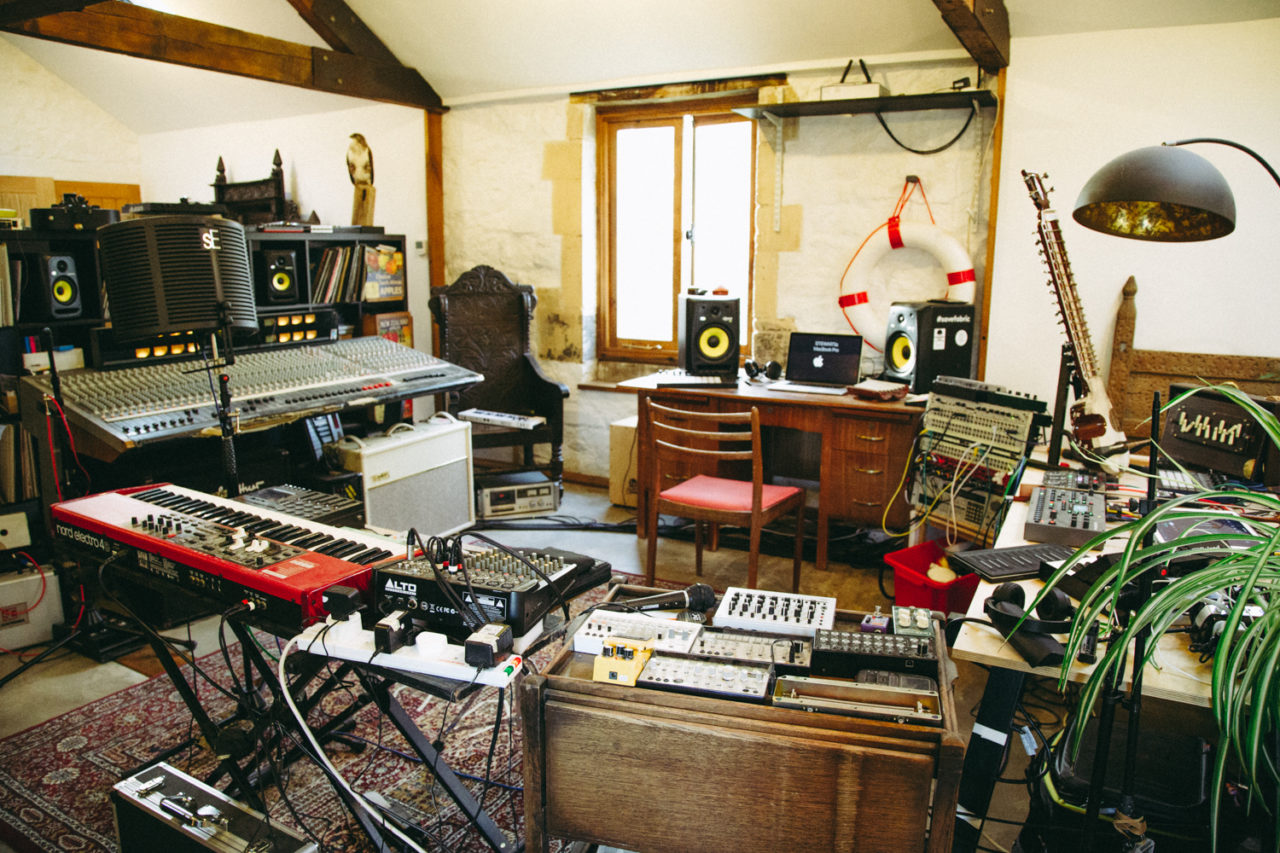
You could easily, and very happily, spend days here, finding out the who what when where how and why of all these objects. However we only have the afternoon, to talk about how Tones created his recent Houndstooth album LOMA, and have him play five integral pieces of gear he used.
Drawing on warped DnB, acid, house, techno and garage, LOMA collected eight tracks from a four-part series released over the course of 2018 as an album, alongside a new remix by Brooklyn-based producer Octo Octa. Given the studio set-up, Tones is rather spoiled for choice in terms of sonic sources and inspiration. So where did he begin?
Tell us a bit about the process behind LOMA – did you record all of the tracks at the same time?
Format-wise, I generally make an LP that is more of an ‘album-album’, like Embers, and the following year I do a series of more dance floor orientated EPs, such as Axioms. For example, Embers was an album, and it’s all one continuous play-through, so that was quite an in-depth process. There was a lot to do with maths and patterns, mirroring it with nature. After something like that, I always feel like I need a breath of fresh air, because it’s quite intense.
So LOMA was a light relief, in a sense. It’s me getting back into using machines, and focusing on that – not worrying about anything too complex.
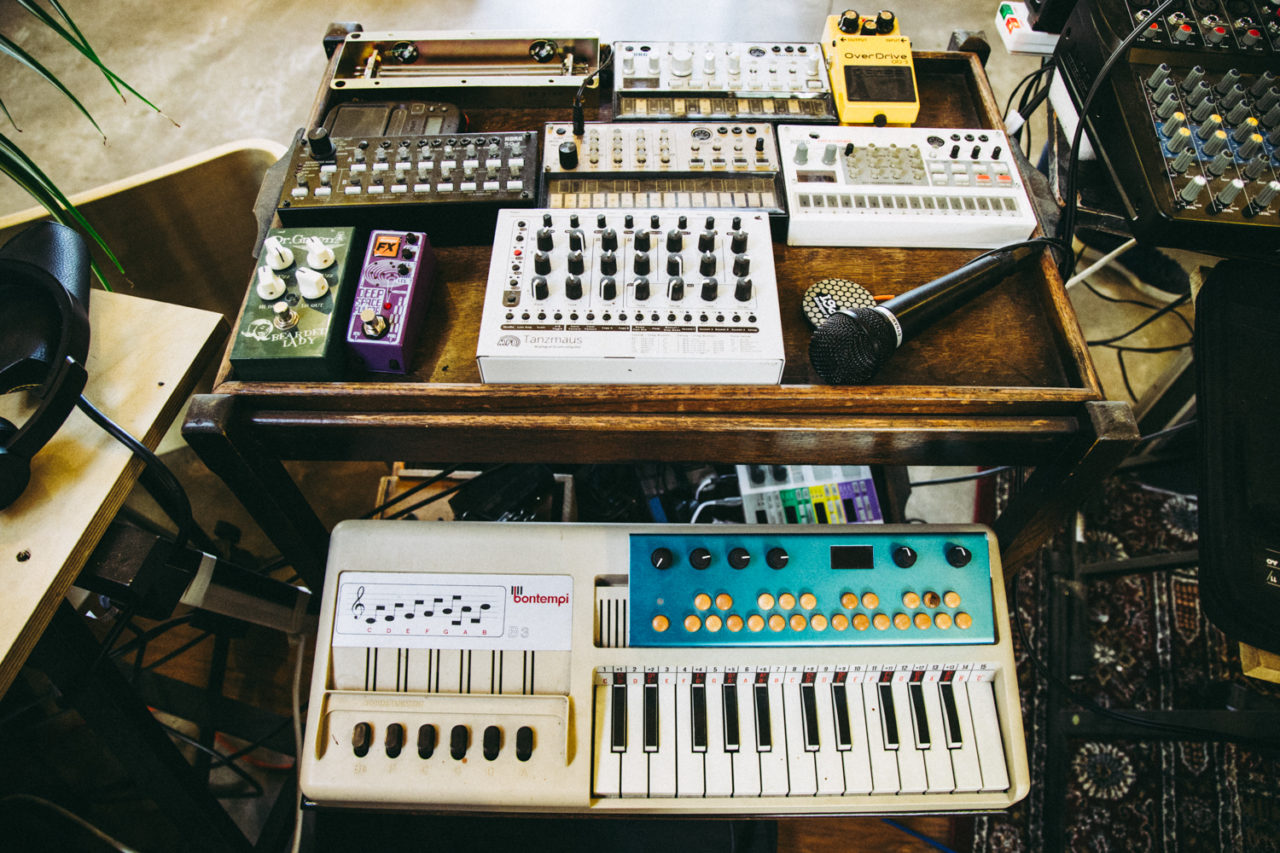
The eight tracks were released in twos, each pair starting with the same letter, like ‘Trébucher’ and ‘Tantrum’. Was this something you planned in advance?
Yes, they were created together as pairs. Although the album order is different, the way they were released on the EPs is that they were all two tracks, written and finished together. It’s a kind of collection rather than a full, ordered album. They should stand alone as themselves.
I love naming tracks. It was meant to be six tracks though, and then it became eight. Because they were pairs of letters, to spell something out with all of them I would have had to pick vowels and letters, like Countdown. Imagine me, as Carol Vorderman: “two consonants and two vowels please.” I’d have ran out of time trying to spell something with the letters – T,T,M,M,S,S,V,V.
With each pair of tracks, is there a similarity that you wanted to have in the music?
Some were similarities and others were differences. ‘Minotaurs’ and ‘Myriad’ are very different tonally, but overall soundwise the things I chose are the same things, but sound utterly and completely different. So although they come from the same place, and they are paired together really closely, it doesn’t necessarily mean that it comes across in the end.
That mixing desk is incredible. What is it?
It’s an Allen & Heath Saber desk, from 1986 I think. I’ve had to remove all these channels. Things go wrong, and that’s the point. But all the mixes are recorded on the computer then comes through here, and I do the final EQ on these. They aren’t meant to be very good, but there’s a character to them that I love. It also gives it an extra layer – it glues it together.
Nobody wants analogue desks anymore. It is the reason I am here. I can’t move it. You need like 7 guys to move it anywhere, someone proper hench to carry that thing. I couldn’t find a flat big enough to take it. I’ve been recording here for a year now. All of the LOMA tracks were written and mixed here. I wanted to set it up and see what it could do.
I can also play music as loud as I want here, nobody can hear a thing. There’s a castle in between us and somebody else, and then there’s just space. I can walk around and feel like I’m in a club, to test it in a way. I’ve also got these big speakers which give you lots of low. LOMA is basically me figuring out how to use all this stuff…
Did you buy all of this for the album?
I collect bits of gear, and I often don’t know what they are going to be for until I have certain bits that I can bring together to create something. All of these work together for me to come up with textures and samples. I can then put it onto the computer. If I’m playing live, I can improvise really easily.
Is the improvisation process important for you?
Depending on the setting. I played at Berghain recently, and I didn’t want any improvisation. I wanted to know it was going to work. If there is one gig that I bring an esraj to and play, it is not Berghain. A drone for 20 minutes in front of a bunch of people – they aren’t going to be buzzing their tits off from it, are they? With other gigs, where people are sat down and listening, I don’t want to just bash out tracks. I want to do something new, and create something interesting, during the performance.
An esraj [a string instrument from the southern region of Asia that’s played with a bow] is pretty unique, where did it come from?
I really enjoy the fact that its scale is dictated. Anywhere you hit it, it sounds nice. There’s no movement between the notes. It’s fretted, which you can’t really do with other instruments.
When I was a kid, I saved this piano by saying to my parents: “I will learn to play if you keep it.” My piano teacher died the next year, so we put the piano in storage, and it got water damaged. Now it sounds atrocious. Because all the strings are slightly wrong you have a spectrum of sound.
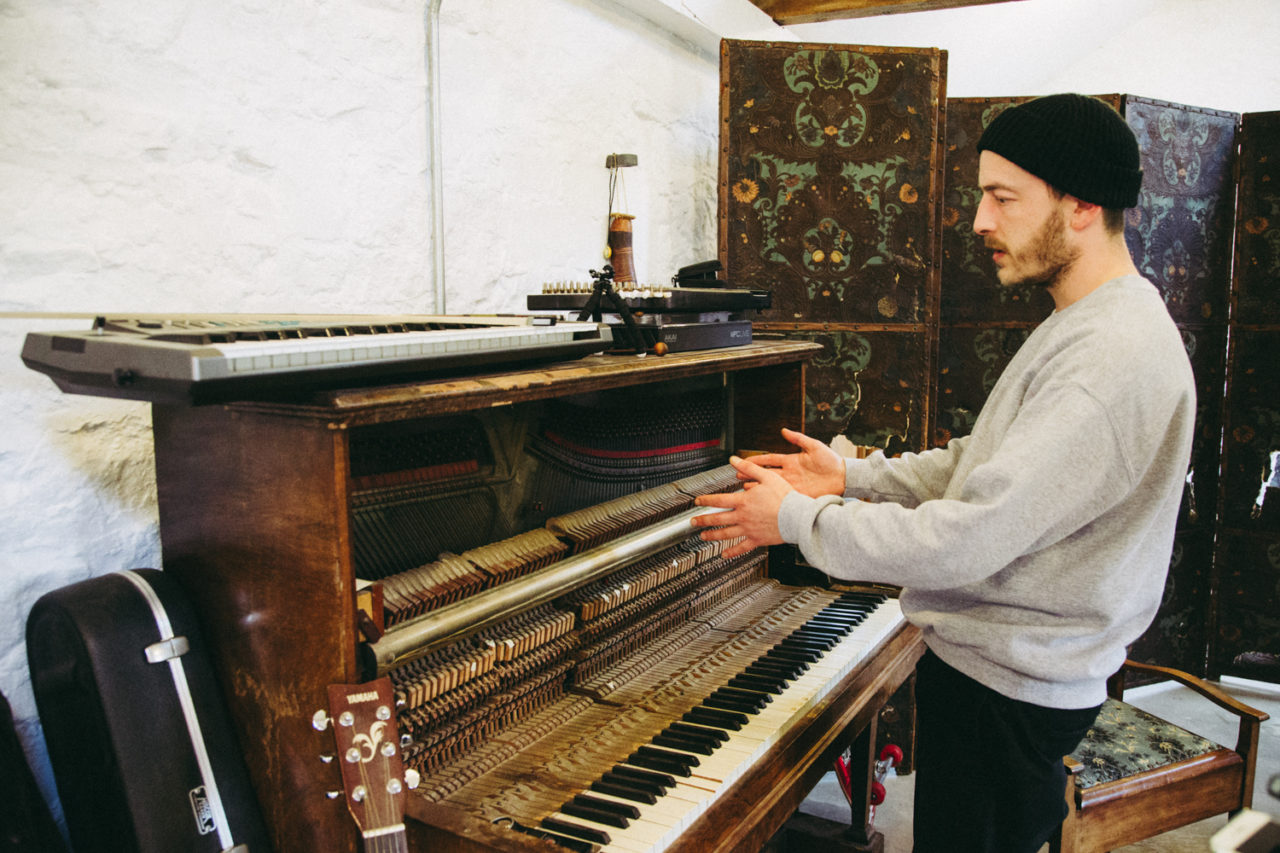
If you play an instrument or sing into it, you get this beautiful reverb because the piano de-tuned. Each string is a slightly different pitch, so whatever sound you play in, you get a different sound coming back. I wanted an instrument that has that quality to it, which is why we bought the esraj.
The other reason I got the esraj was because I was playing the cello a lot, and I really enjoy bowing.
I wanted to play the sounds from the album live. When you get things that are one-off sounds, you’ll have to make it into a sample. I couldn’t reproduce the sounds correctly. So, I decided I wanted to learn the instruments, to be able to get the same sound again. It’s the same process of finding something, processing it, recording it into SAMPLR, and then using the Octotrack – sending it back over itself.
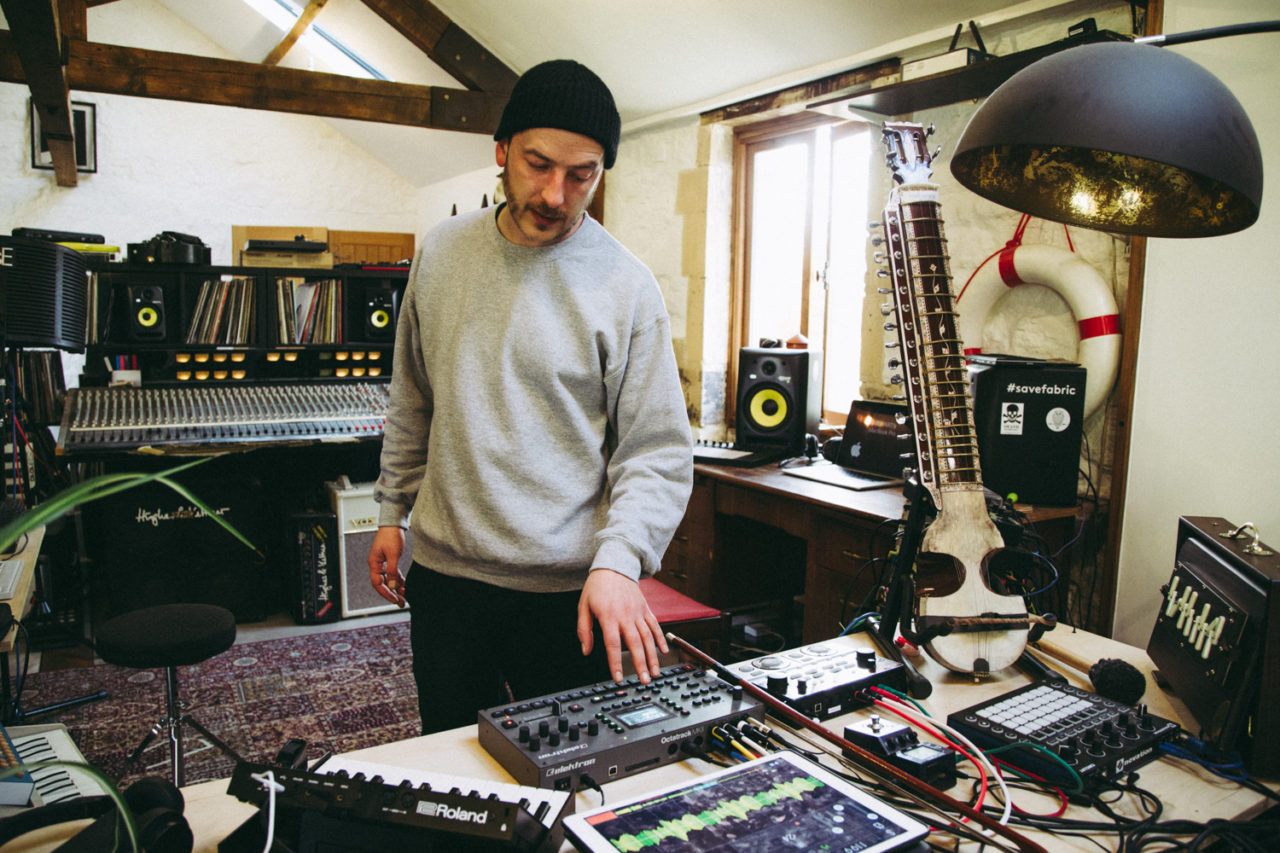
This is the Octotrack – it’s the brains of the business. It’s a mixer, it does its own effects, it can sequence everything else. I used that on everything on the album. I like to use hardware to come up with ideas, and then maybe change it when it’s in Ableton. I enjoy being able to manipulate the audio. With this crossfader you can assign many different functions to it. So when you slide it across, an entire sound can morph and change. It’s the same concept as a synth where the soundwaves can morph.
You’ve got to compromise on what you want to play when it’s live though, because when there’s only one of you, you can’t physically play everything.
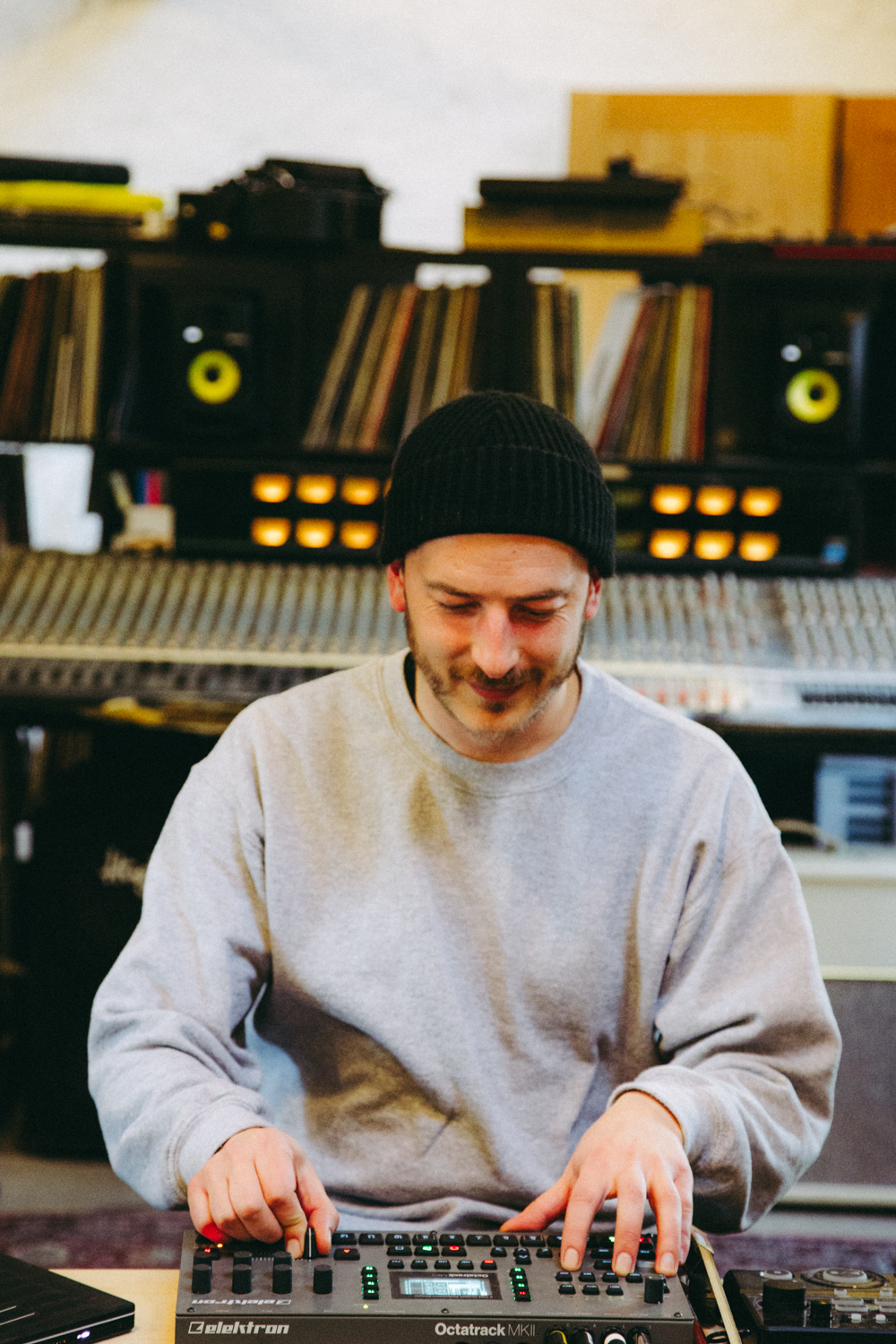
At what point do you stop with experimentation?
When you find sounds that you like, I suppose. For this project, I wanted people to understand it somewhat. On other music I create, I don’t care as much about that, but here I didn’t want things to sound totally experimental.
The snare hits from ‘Minotaurs’ came from a pattern that I put through three delays, which created this stuttering effect. Instead of using the sound, I took the rhythm to trigger the snare sample by replicating the pattern. Using things which are controllable are always unpredictable though.
I’d love to come up with deliberate unique sounds, but the best things come from accidents and trying to get to that point and failing. I find that more interesting.
Below, Tones plays and talks us through five key pieces of his set-up that were used to create the album:
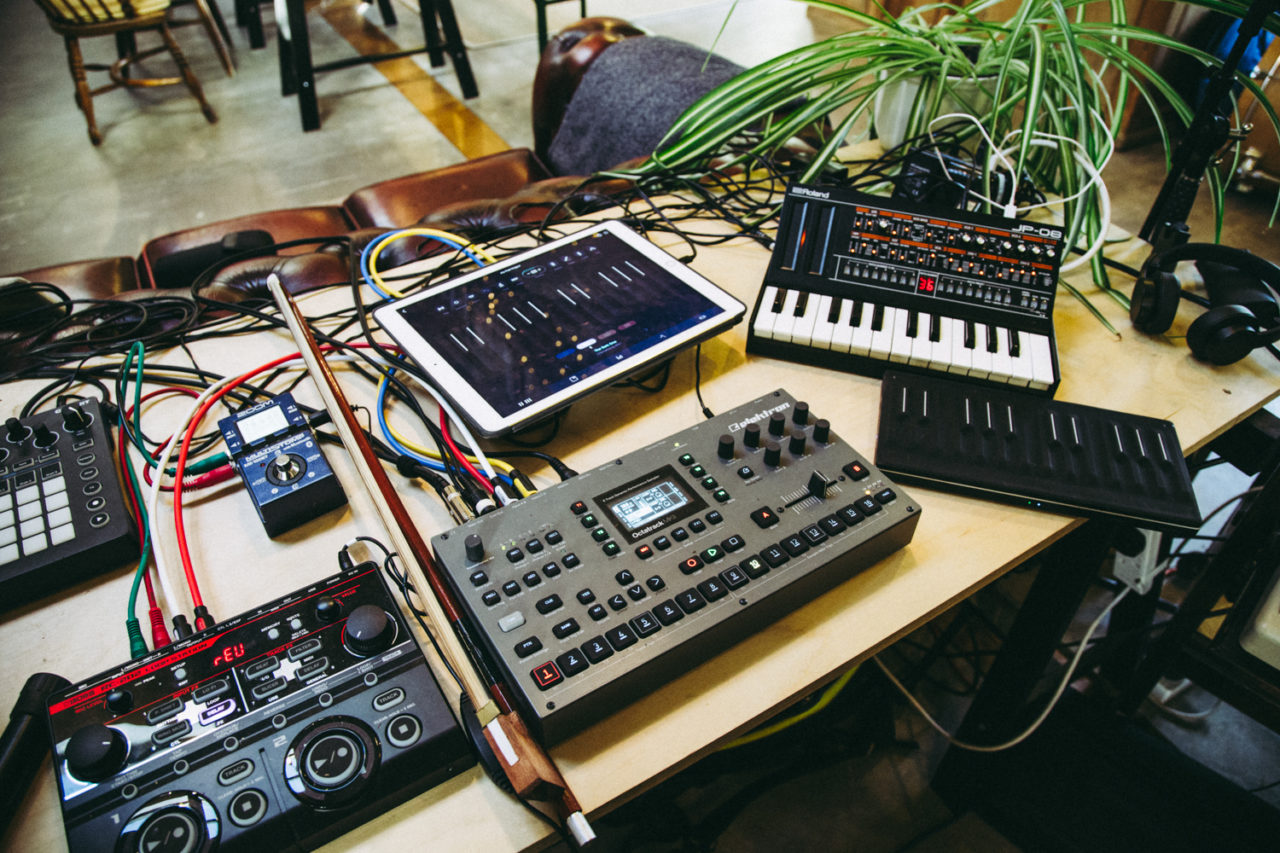
What’s being played: OP-1 (Midi ARP) > MFB Dominion Club > Caroline Meteore > ZOOM MS60B
As heard on: ‘Simmer’
How it’s used:
I use the arpeggiators on the OP-1 to control the MFB synth because it has such an inventive variety of techniques and parameters to sequence notes and come up with random patterns. I use the MFB Dominion Club as a synth because of the sweepable wave shapes and filter types. It allows you to morph a sound’s characteristics rather than maintain a consistent tone. The pedals are there to further sculpt the sound and the importance of the ZOOM pedal will be described later.
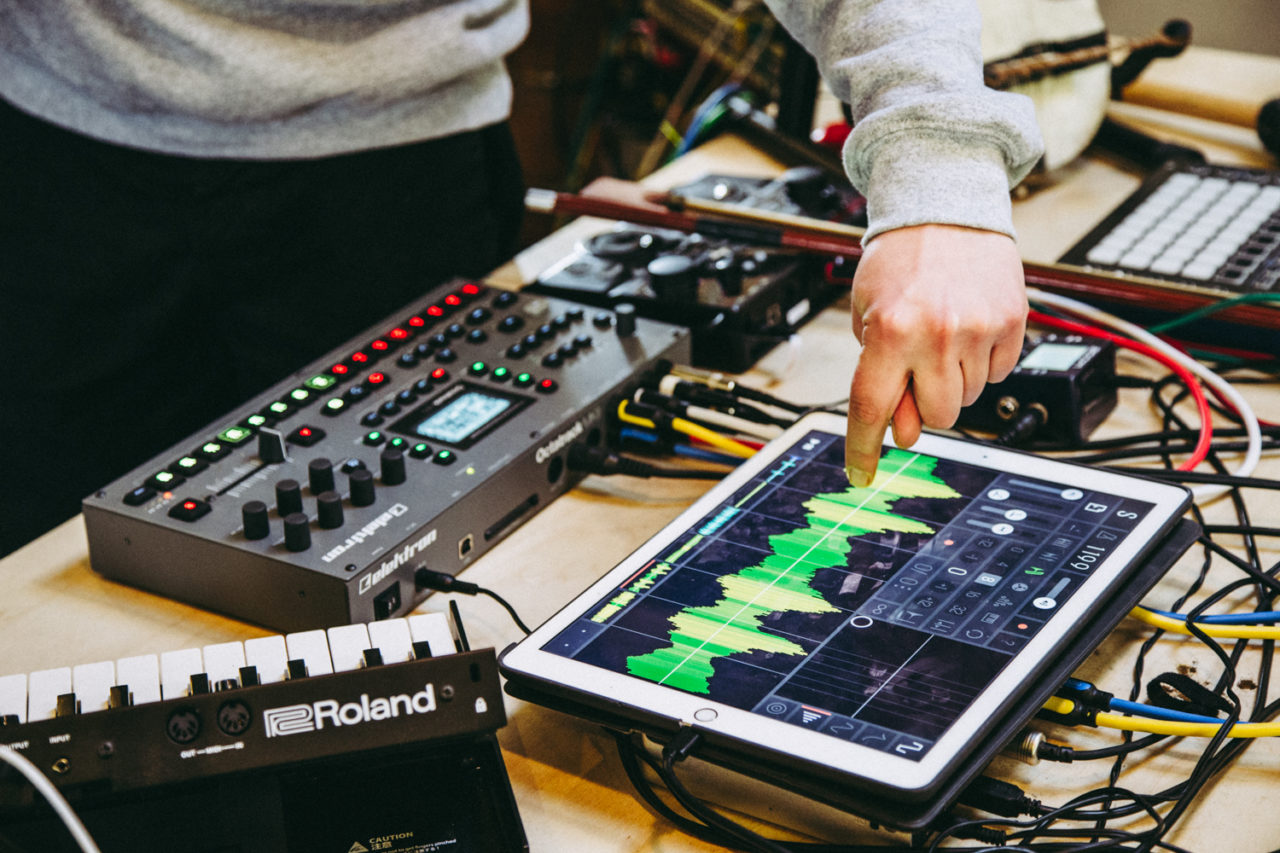
What’s being played: SAMPLR
As heard on: Sample manipulation on the ‘bowed lid’ that appears throughout the tracks
How it’s used:
To tie the album together, I used a sample originally recorded by Will Plowman of a metal lid bowed with a violin bow. SAMPLR is an amazing tool to mess around with audio in various ways. It was developed by Marcos Alonso who, I think, does the user interface for Apple. If I was to recommend anything for anyone to buy, for just writing music on, I’d say get a tablet or iPhone and then get Samplar. It’s £9.99 but is pretty much one of the best things I’ve come across. It’s amazing and so easy to use. You can play sounds within the software in various different ways. There are six different functions.
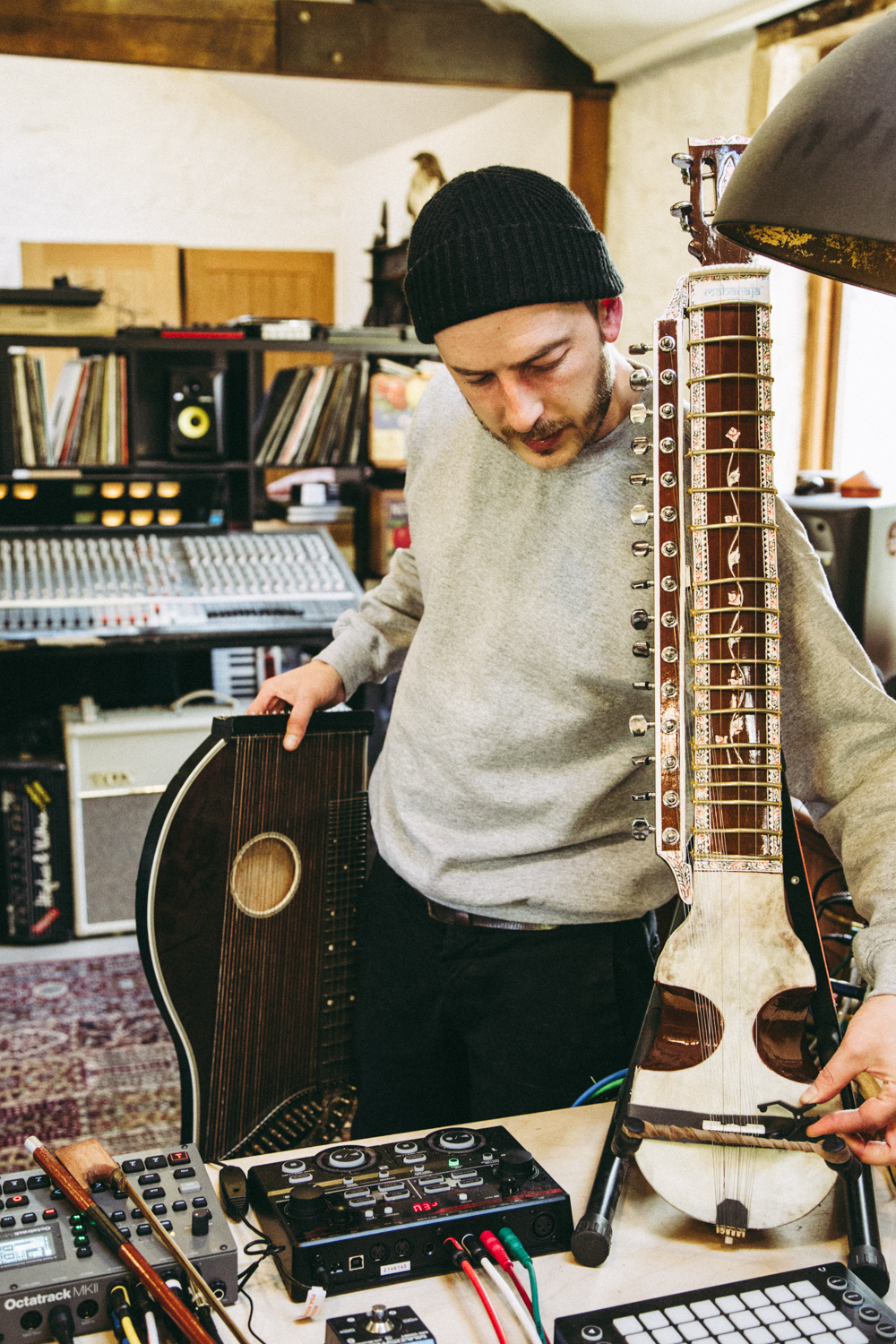
What’s being played: Sound Source (Esraj) [Contact Mic] > ZOOM MS-100BT > BOSS RC-202 LOOPER > Octatrack > iConnectAudio4+ > iPad running SAMPLR
As heard on: Playing live versions and jamming to create ideas
How it’s used:
This set up allows me to manipular audio, from either a live recorded instrument, or a loop , very easily.
At almost every part of the chain there is either multi FX and/or a looper. This means I can mess about with a recorded sound, loop it, then pass it to the next machine to be further manipulated, often while the first loop is playing. The ZOOM MS-100BT is an amazing, cheap pedal with loads of stackable effects enabling you to warp the sound. You can then loop the audio and further FX on the BOSS RC-202. This plays out of the Octatrack where you can do even more interesting stuff, like sequence FX or chop and rearrange. If I then CUE the Octatrack input from the rest of the chain, I can send audio to the iPAD running SAMPLR, because the CUE outputs are connected to the inputs of the iConnectAudio4+.
Though it may sound terribly complicated, it’s really easy to use once you get the basics. The audio is an example of an improvised track done live. All the sounds apart from the drums are from the esraj.
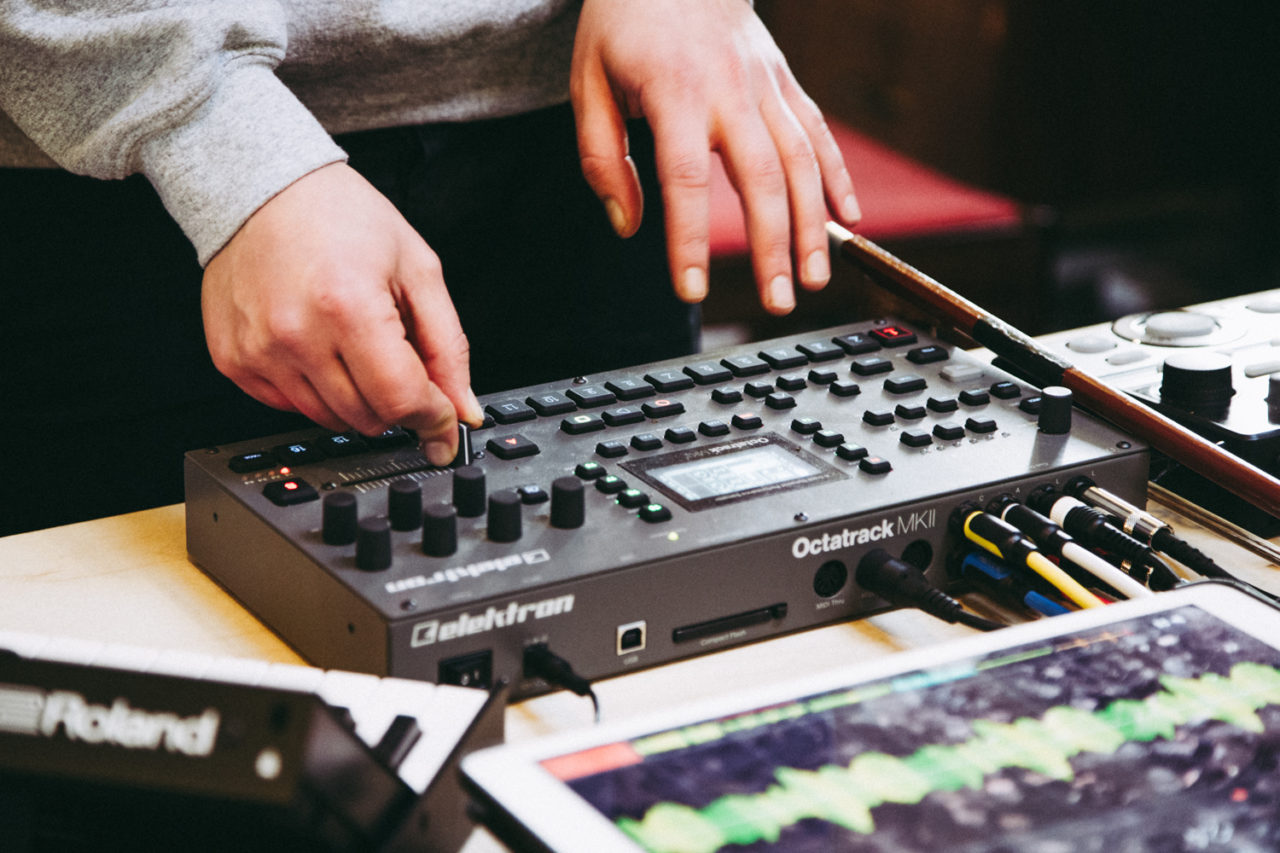
What’s being played: Elektron Analog Heat + OTO BAM Reverb
As heard on: Percussion on ‘Minotaurs’
How it’s used:
The Elektron Analog Heat has eight different analogue distortion types – all the circuitries are within this one device here. If you pass something through it, you can either obliterate it and make it distort really strongly, or you can subtly use it to warm a sound, or use an LFO to turn it on or off, so you get a stuttering distortion sound. Sampled percussion from various drums I have are processed using the Analog Heat for warmth through to distortion. The OTO BAM allows me to vary the reverb on certain hits.
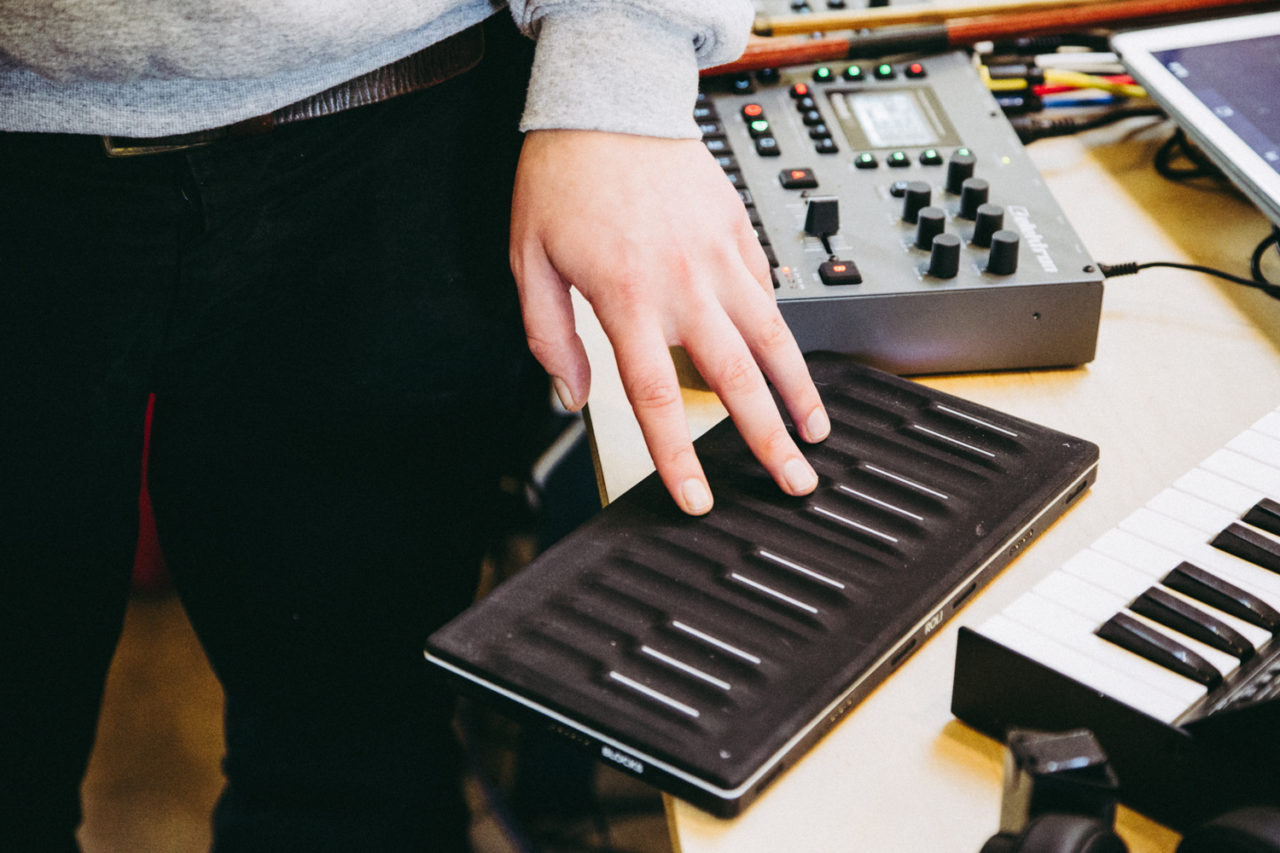
What’s being played: Roli Seaboard Block > iPad running Volt
As heard on: Synthline from the ‘Minotaurs’ breakdown
How it’s used:
The Seaboard Block is an MPE keyboard controller. It allows you five dimensions of control of a sound by varying things like pressure and left, right, up and down motions. These motions can control parameters like filter cut-offs of amount of reverb. It’s also amazing because these controls apply per note, meaning I’m in control of all the notes I play individually. It’s so intuitive to play once you get used to it, and you can really sculpt the sounds you want, all from the way you play the touch keyboard.
LOMA is out now on Houndstooth.
Listen to Throwing Snow’s track ‘Rheged’, from the forthcoming fabric presents Bonobo mix here.
Photos by Elina Abidin for The Vinyl Factory.

